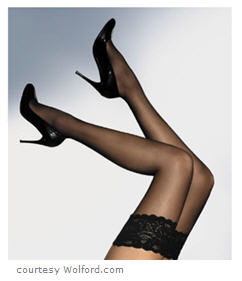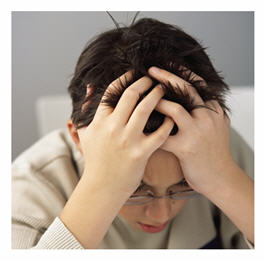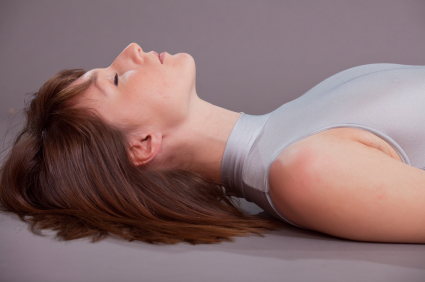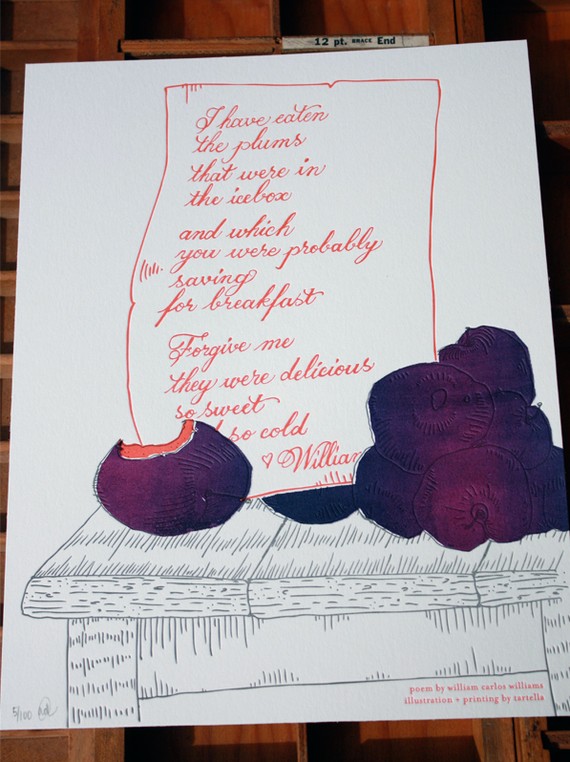Wednesday Bubble: Age Rage. Guest post by D.A. Wolf
Some of us lie about our age. Others, like me, don’t. But the point is less the lying and more the why. Fellow writer extraordinaire D.A. Wolf weighs in in this guest post….
It isn’t that I don’t worry about it. I do.
It isn’t that I won’t talk about it. I will.
But age isn’t a simple topic, and if you’re a woman, you already know that. At least, you’ll know it sooner or later, and more piercingly than your husband, your brother, your uncle who’s still playing the field, your male boss who continues to climb the corporate ladder, or your 50-something divorced and dating dad.
Aging is unavoidable – if you’re lucky.
Age rage? In this culture? Maybe that’s unavoidable, too.
No, I’m not taking to the highways in a pickup with a shotgun. I’m not planning on packing pistols and going postal over the AARP invites arriving weekly. But I will stand up and proclaim that age discrimination is alive and well – more subtle than we’re willing to admit, and increasingly pervasive.
The worst part?
It feels like we are the “haters.” Women. The ones who make snide remarks about others “showing their age.” The ones who fight tooth and nail at the first sign of laugh lines, gray hair, or traces of soft excess that no amount of dieting will eradicate, where we once carried babies in our bellies.
We aren’t doing ourselves any favors – not at 30, not at 40, not at 50 or any age – viewing the natural process of aging as the enemy.
Aging: It Creeps Up On Us
It isn’t that I don’t feel it – the proverbial march of time in my limbs, in the small of my back, in my shoulders and neck after a long day at the computer. It isn’t that I don’t see it in my face, when morning forces me to look – and I scrutinize – then reach for the moisturizer.
It isn’t that I don’t suffer from a sense of invisibility that comes from walking down a street like a ghost. This is midlife. A transition. But it’s more than that – a parade of days as potentially routine or vibrant as the thousands that have come before, and the thousands that I hope stretch ahead.
 For now, I can paint the gray, gloss my lips, line my eyes and I’m done. I can crank up the bounce in my step – especially in hot heels – in order to maintainsome visibility as a woman. But none of this changes the fact of my age. It doesn’t change the perceptionof who I am when someone knows my age, which may have little to do with the reality of who I am as a person, or the life I lead.
For now, I can paint the gray, gloss my lips, line my eyes and I’m done. I can crank up the bounce in my step – especially in hot heels – in order to maintainsome visibility as a woman. But none of this changes the fact of my age. It doesn’t change the perceptionof who I am when someone knows my age, which may have little to do with the reality of who I am as a person, or the life I lead.
All of which is to say – it’s the assumptions and misconceptions that anger me. I find them absurd. I consider them dismissive. We are individuals. We age differently. And we ought to be allowed to approach the aging process accordingly.
And yes, there is a sense of loss – for some of us, it’s loss when we can no longer bear children, loss that we don’t appear or feel as “perky” as we once did, sorrow as we come to accept certain physical limitations or simply additional maintenance. Many women refuse to speak of the sadness, to grieve aspects of their younger selves, as though to do so is to admit some terrible truth.
I say – to hell with that!
Aging is a mixed bag, but it’s also more of the same – the same joy and challenge in meeting life as it is, the same excitement and risk in chasing your dreams, the same sweetness in finding love, mischief, humor, beauty.
Why Women Lie About Their Age
Do I lie about my age?
You bet. When it suits me. But more than that, I do so when it’s a necessity.
A necessity for getting work. A necessity for being seen as “valuable” – regardless of how I see myself. A necessity in the dating world, if you find yourself widowed or divorced.
Do I long for a culture in which age would be viewed as one more interesting fact – of no particular importance except perhaps to your physician?
Believe it.
So tell me. Do you lie about your age?
I bet you would – in the right circumstances. To get a job, and keep it. To have a shot at a few dates, and not be discarded as a viable potential “candidate” for a relationship.
Look Around. Age Estimates?
I’m an older mother, though this is no longer unusual. I gave birth in my mid-late thirties, and strangely, having kids older has kept me young in some ways, and aged me in others.
 There are advantages in terms of experience and patience. There are disadvantages – not so much when dealing with babies and toddlers, butmidlife motherhood when kids are fighting? Going through your own hormonal changes as teenagers are bouncing around inside their bodies?
There are advantages in terms of experience and patience. There are disadvantages – not so much when dealing with babies and toddlers, butmidlife motherhood when kids are fighting? Going through your own hormonal changes as teenagers are bouncing around inside their bodies?
Sound proof the walls!
Thinking back to my childhood, I recall family members of all ages at social gatherings – intermingling and joining in the discussion. When I’ve lived in Europe or visited friends, the parties I attended included 20-somethings through 80-somethings. To me, this seemsnormal.
Consider this. Watching old movies from the 1940s and 1950s, note the generational mix in scenes of night clubs, at concerts, around the dining table. You’ll observe everyone from 20-something through middle age to “older” people (sixties? seventies?) all socializing. In films that offer business settings, while the women generally play a Girl Friday or wife, do note that you see men who are young, and plenty who older.
Today?
When’s the last time you socialized with people who were 20 years your senior? Look around your workplace. Is there anyone who appears to be over 50?
As I recall my last in-office contracting gig, there wasn’t a single manager or team member even close to 50 – out of a group of considerable size.
How Many Shades of Gray?
 Everyone may be talking about the latest book to make waves – all those shades of gray in intimate relationships. My preoccupation with shades of gray?
Everyone may be talking about the latest book to make waves – all those shades of gray in intimate relationships. My preoccupation with shades of gray?
There’s the expense of coloring my hair, which is an irritation. As my skin remains youthful, I paint the gray and pull off whatever age it is that I pull off… in person.
But the fact remains that a man with silver hair is perceived as distinguished, and a woman – with a few notable exceptions (Helen Mirren comes to mind) – is considered to be letting herself go,someone who has given up on dating, and consequently, a woman past a sex life.
Live Fully, Live Well
Am I taking to a bullhorn in my quiet neighborhood?
Hardly.
But that doesn’t mean that I don’t feel infuriated when I’m dismissed without a second look, when professional experience is ignored in favor of quick, cheap, and disposable, or when men my own age won’t give me a second glance – even before they’ve met me.
But I long for a little common sense. Aging is inevitable, and anti-aging propaganda is just that – propaganda. That doesn’t mean we don’t have choices in products and services, but what about a healthy glow as a mature adult? Doesn’t that sound refreshingly good to some of us?
On that note, I’ll pop my Over-The-Counter calcium with my salad and yogurt. I’ll remind myself to stay focused on the basics – continuing to nourish my mind with constant learning, and my body with healthy food in moderation. I’ll attempt as much sleep as I can manage (tougher for me), and daily walking, which is all about discipline.
Senior Sex and Sensibility?
Jane Austen, move over. Sense and sensibility? Let’s go with sex and sensibility instead.Safe sex, of course.
 I’m not quite at “senior sex” just yet – not that I would know where to make that distinction. But sensuality and sexuality don’t evaporate as we grow older. At least, they don’t have to.
I’m not quite at “senior sex” just yet – not that I would know where to make that distinction. But sensuality and sexuality don’t evaporate as we grow older. At least, they don’t have to.
Do our intimate lives change? Sure. But my personal Rx involves a steady dose of sizzling sex with a man I love – with or without his shades of gray, or my own. And let’s face it – that’s a hell of a cardio. What could be better to soothe the Age Rage?
- Do you unknowingly discriminate against those over a certain age – before you’ve met them?
- Has your impression of what is “old” changed as you’ve grown older?
- When’s the last time you engaged in conversation with someone who is 70+ or 80+ years old?
- Are you worried about getting older, and fighting it tooth and nail?
Read More
Finding the ME in menopause. Guest post by Kelley Connors
Sometimes you meet a person and know instantly that s/he will be an influencer in your life, someone who shares a common interest and someone who can teach you a few important lessons. Kelley Connors is one of those people. I met Kelley at a conference last Fall and continue to be wowed by her contributions to women and their health. Thanks Kelley, for this great post!
The ME in menopause is a journey, or as best-selling author, Gail Sheehy, might say, a passage. Only there are distinct differences from that original publication back in 1976 when Ms. Sheehy was in her late 30’s, and first wrote about the midlife “crisis” as passage point.
Ms. Sheehy is the first to admit that the first book fell short on what would become the real midlife, as she had no idea of what 50 might look like herself in 1976, other than distinctly “old” images of her mother and father. (Since then Ms. Sheehy has written New Passages and Passages for Caregivers, inspiring many women like me to also share my “passage”.)
Things are different today, in 2012, as we now know that menopause is a time of estrogen-deficiency, and not a crisis at all, but a virtual gateway to the next 30-40 more years of life. It’s a time of awakening, of realizing our potential, and potentially a very free-ing time in our lives.
That’s how I’ve chosen to see this time in my life and I’d like to be one of the increasing numbers of “old” women, who might see 92 from the third seat in a scull, and rowing in a Master’s rowing event instead of succumbing to osteoporosis, one of my biggest risk factors.
So, with my vision for how I wanted to be at 92, I became more interested in creating a foundation for wellbeing, a pathway that would give me the tools for a positive mindset, a flexible and strong body, and the energy to be creative – all factors in assuring longevity. Research shows us that doing all we can do in our 50’s is critical to setting a foundation for living well through out our life – emotionally, physically and spiritually.
How I Have Reinvented Menopause (so far)
As I near menopause, I decided to take new steps – steps that I had previously not really considered important in my life.
Once I learned about how the physiological changes associated with estrogen loss, I decide to be more proactive in preserving my quality of life, and perhaps even gain strength, muscle mass and, the holy grail, fulfillment and happiness. One thing was motivating me for sure – I did not want to succumb to the conflicting and disingenuous advertising messages we’re bombarded with as we women age!
First, exercise for wellbeing. I made a decision to join a women’s rowing, or crew team. It was not a decision that was easy to make, as I’m not an early morning person, but, as I’ve come to appreciate, there’s nothing like rowing with like-minded women on calm waters – and, there’s no better way to start a hectic day than rowing at 7 am. The really great thing about rowing is that you have to learn to “recover” from each stroke, giving you the cardiovascular strength you need to row for at least 30 minutes and possibly, achieve your target heart rate for at least 20 minutes. Cardiovascular strength training such as rowing or bike riding, is good for your heart, and makes you feel better, giving you a sense of wellbeing. While you will probably loose weight, the sense of wellbeing will be motivation enough to continue your commitment to yourself. You might even be able to rid yourself of an anti-depressant prescription!
Second, take a proactive mindset instead of a reactive mindset around nutrition. One of the changes I made to my diet, as a result, was taking dietary supplements. New research shows that taking a multi-vitamin may not help us women live longer. However, there are several key dietary supplements that are recommended for menopausal women such as fish oil supplements ( Omega-3 fatty acids), Vitamin D and Calcium. Have you considered taking any of these supplements that are proven to help menopausal women?
Third, I created my first ME-Pause. This “ME-pause” was packaged in a not so neat bow, with no clear answer, no clinical trails, and, ironically, no obvious relationship to my health. My Me-Pause was a defining moment as I declared the death of my life as a run-on sentence. Taking time to pause, reflect, think and plan have become more important to me. Putting a comma in a sentence is a good thing.
My ME-Pause turned out to be a cultural expedition to a little known ancient civilization, the last Shangri-La and a Buddhist haven nestled in the Himalayan Mountains – Bhutan. A remote civilization with few roads and hundreds of temples, Bhutan measures its progress by Gross National Happiness – as opposed to GNP. As Buddhists, the Bhutanese believe happiness arises from causing happiness in others. It’s more than a fleeting feeling of joy, but a belief in the power of positive thoughts, simple acts of kindness and love that transform people, communities and our relationship to the world.
The overarching result of my two-week trip to Bhutan with my aunt remains significant in my life today. I’m looking at menopause as a glass half full, a time in my life that is just the beginning to finding and designing the second half of my life with renewed passions and interests. I’m seeing, for the first time, that I can create my own wellspring for living better .. and into old age..and just maybe, I’ll have that third seat in the scull with three other women rowing the calm waters of the early morning.
About the author…Kelley Connors, MPH, is a women’s wellness coach, marketer and advocate for women’s health. She is the founder of Real Women on Health and President and Chief Creative Officer for KC Health.
Read More
Wednesday Bubble: is DHEA the path towards a better sex life?
Today’s Bubble is a doozie that can one of two ways: in the yes(!) column or in the no (!) column. I’ll leave it to you to decide.
DHEA is the most abundant sex hormone in circulation and is mostly secreted by the adrenal glands. Research has shown that low DHEA levels in pre- and postmenopausal women may negatively affect sexual functioning, while ample blood levels may enhance sexual functioning, cognitive functioning and wellbeing. Yet, whether or not DHEA really works continues to be controversial. And the reason behind the burgeoning interest is the quest to find a suitable replacement for HRT. The thing is? There are lots of suitable, evidence-based replacements that are not broadly accepted by many medical professionals and many of these are discussed regularly on this blog. Nevertheless, here’s what researchers have just discovered about DHEA.
The researchers, from Pisa, Italy, followed 48 healthy, postmenopausal women for a year. During this time, they divided 36 women who were experiencing troublesome menopausal symptoms and requesting hormone replacement into three groups:
- 12 women who received 10 mg daily of DHEA
- 12 women who were given combined HRT
- 12 women who received the synthetic hormone, tibolone, daily
The fourth group was comprised of 12 women who did not wish to use HRT. They received daily vitamin D (400 IU) and calcium to help combat osteoporosis.
At the start of the study, all of the women reported similar sexual activity. However, after a year of treatment, women taking DHEA had significant increases in sexual interest and activity scoring almost 14 points higher on a questionnaire used to measure sexual interest, satisfaction, vaginal lubrication, orgasm and sexual partner. The women taking HRT experienced similar benefits, and women in both of these groups reported engaging in more sexual intercourse compared to women taking Vitamin D and calcium. Women taking the synthetic hormone also had increased sexual interest scores but they were not as high as the other two hormone groups. The magnitude of improvements in menopausal symptoms was also similar between the DHEA, HRT and tibolone groups.
The reason for this improvement appears to be the effect that DHEA has in terms of improving blood levels of the hormones estradiol and progesterone, both of which decline during menopause. It also appears to positively affect adrenal functioning.
What to think? Well, the study didn’t include any information on side effects. This is what Mayo Clinic has to say in that regard:
“No studies on the long-term effects of DHEA have been conducted. DHEA can cause higher than normal levels of androgens and estrogens in the body, and theoretically may increase the risk of prostate, breast, ovarian, and other hormone-sensitive cancers. Therefore, it is not recommended for regular use without supervision by a licensed health professional.”
Another important fact, acknowledged by the researchers, is that DHEA was only studied in 12 women, hardly enough to draw any firm conclusions. But they do believe that the findings, albeit preliminary, are encouraging, especially for women who “may have problems in taking more conventional HRT.”
Personally, I believe that it’s waaaaay too early to even consider DHEA as an alternative to HRT and in particular, to androgen therapy for sexual health. I want to see more information on side effects before it’s even on the radar. Meanwhile, I would love to hear what you think:
Yes!?
or,
No!?
Read MoreWednesday Bubble: Can yoga decrease insomnia, improve sleep quality?
I love that yoga practice continues to take center stage in Western medicine. Truly, this is mind boggling because rarely, if ever, has an alternative practice been given so much credence within the confines of a medical philosophy that allows little outside the box. However, just a few weeks ago, yoga made the headlines again with data showing that it might be useful for treating lower back pain than standard therapies.
In menopause, yoga practice has been explored for stress relief, to improve wellbeing and as a tonic for vasomotor symptoms. Notably, the latter are considered to be partially responsible for significant sleep issues that occur during and after menopause. Indeed, some data show that up to 81% to 83% of women may have sleep complaints and 52%, insomnia.
Yet, like many strategies, yoga is not a one size fits all practice and there are many branches and types, some being meditative and others breathing, and some more physical than others. These distinctions can make it difficult to standardize studies and apply their results. Still, I was thrilled to stumble across a study evaluating the effects of a specifics sequence of yoga on physical and mental health, and symptoms in menopausal women experiencing insomnia. Importantly, this study used a scientific, randomized controlled design to insure that test conditions were up to par with Western methodological standards.
Basically, researchers assigned 44 menopausal women diagnosed with insomnia to one of three group:
- a control group who ingested 500 mg calcium daily
- a passive stretching group, who participated in two, one hour passive stretching classes a week (including stretching of back, stomach, ankles, knee, thigh, elbow, shoulder, wrist and neck) or,
- a yoga group consisting of two, one hour sessions weekly. These yoga sessions were based on a sequence using stretching positions (asanas) with strong and fast breathing (bhastrika) followed by directed relaxation.
Women in these groups also took 500 m g calcium daily.
The study, which lasted for four months, showed that engaging in a particular sequence of yoga significantly reduced vasomotor symptoms and improved sleep/insomnia severity and mental health compared to passive stretching or simply taking calcium. Women who took the biweekly yoga classes also had higher quality of life scores and better resistance to stress. And while the passive stretching group certainly did not do as well, they did trend towards these benefits as well, especially with regards to the degree of reported stress in their lives.
The researchers believe that regular yoga practice, at least with these particular sequences, alters the nervous system and increases brain concentrations of a potent neurotransmitter – λ-aminobutyric acid – to help improve sleep patterns and reduce vasomotor symptoms. Likewise, stretching may lead to a state of calm that results in reduced metabolism, heart rate, blood pressure, breathing and muscle tension, all of which contribute to stress (or stress reduction).
Granted, this is a small study but it was rigorously designed and suggests that yoga may help sleep issues associated with aging and menopause. I, for one, want to run into a yoga studio. I don’t recall the last time my zzzz’s were not interrupted.
Read More
Plums…delicious, sweet. And, good for bone health?
[Image: all rights reserved 2012. Used with permission by Tartella. Visit them online at http://www.tartella.com/ and if you love this print as much as I do, you can purchase it in their Etsy store.]
Yowza! I am excited about study findings published in the British Journal of Nutrition linking dried plums (better known as the lowly prune) to improved bone mineral density in menopausal women. If these findings ring true and can be duplicated in larger groups of women, they may have a tremendous impact on the steps we take to preserve our bones as we age — most notably, the ability to avoid bisphosphonates — which have been linked to collapse of jaw bones and even an increase in the fractures they are supposed to protect. Moreover, although calcium supplementation is broadly recommended, there is an indication that it may increase heart disease risk in some women.
However, as one of the investigators note in BJN, study findings consistently show that greater intakes of fruits and vegetables have positive effects on bone resorption (the breakdown of bone), adding prunes among fruits and onions among vegetables, to be the most effective functional foods in terms of their actions on modulating the process by which bones break down and build up again.
In animal studies, prunes were shown to prevent bone loss as well as restore bone mineral density in conditions created to mimic bone loss associated with osteoporosis. In addition to these studies, researchers had also a conducted a short, three-month study in menopausal women in whom bone mass was improved simply by eating around 10 prunes (100 g) daily.
In this latest iteration, the same researchers compared two groups of menopausal women assigned to eat around 100 gm of prunes (~10) or 75 gm dried apples (the equivalent of the prunes in terms of energy, carbohydrates, fats and fiber) daily for a year. All of the women had been in menopause for anywhere from one to 10 years, were not on hormone therapy and were also asked to take 500 mg calcium plus 400 IU vitamin D with their daily dried fruit.
The findings? By the end of one year, women eating prunes had significantly lower levels of several markers for bone turnover compared to their peers who ate dried apple. Conversely, the prune eaters had significantly higher levels of bone mineral density in their ulnas (one of two long bones in the forearm) and spine compared to the other group. The researchers say that this is partly due to the fact that prunes suppress the rate at which bone cells break down bone, which exceeds the rate at which they build it up as we age.
Women in particular lose up to 50% of their spongy, or trabecular bone (the network that makes up most of bone structure) and up to 30% of their cortical bone (the outer shell) within the first 10 years of the onset of menopause. Of the investigators, Professor and chair of Florida State University’s Department of Nutrition, Bahram Arjmandi, suggests that women (and men) interested in maintaining or even improving bone health start eating two to three prunes a day and gradually build to six to 10. Arjmandi says to “do something meaningful and practical beforehand, ” and “don’t wait until you get a fracture or are diagnosed with osteoporosis” and need medication.
Sure, prunes get a bad rap. But aren’t ‘bad’ bones even worse? Truly, prunes can be ‘as delicious and sweet’ as plums. The writing on the wall suggests that you don’t wait until it’s too late.
Read More











